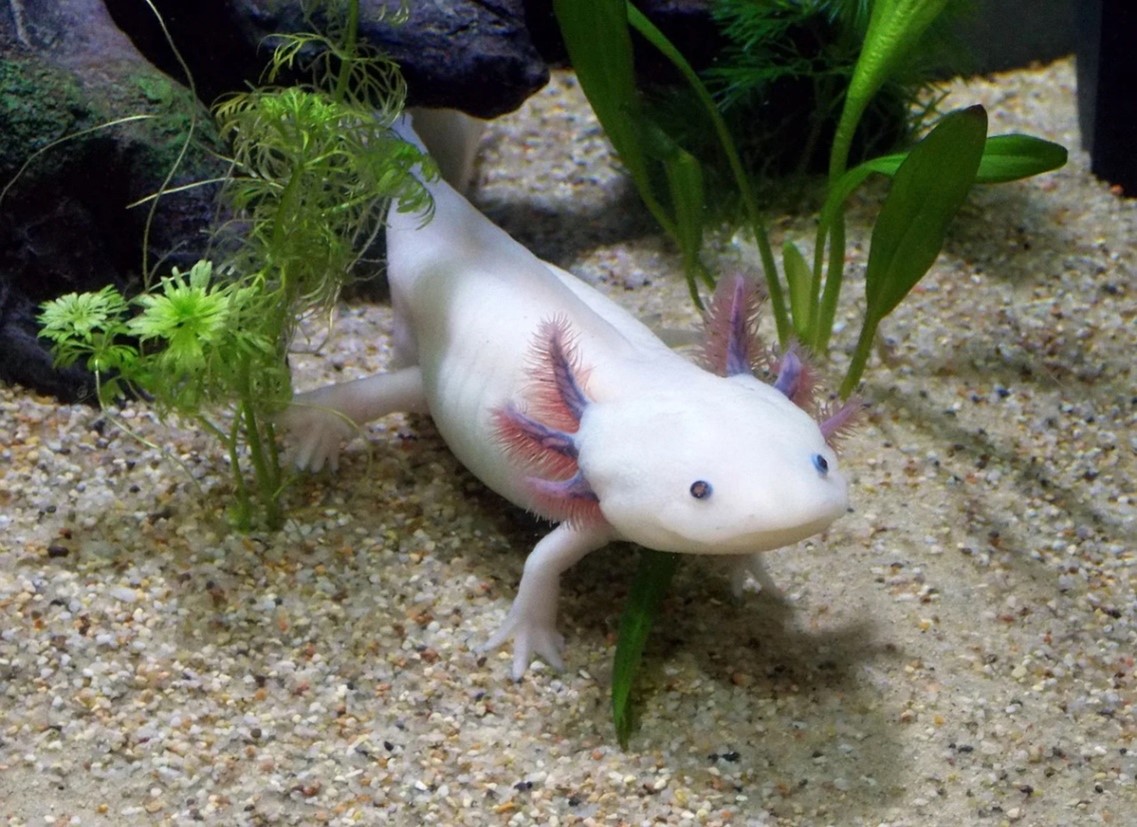- Courses
- GS Full Course 1 Year
- GS Full Course 2 Year
- GS Full Course 3 Year
- GS Full Course Till Selection
- Answer Alpha: Mains 2025 Mentorship
- MEP (Mains Enrichment Programme) Data, Facts
- Essay Target – 150+ Marks
- Online Program
- GS Recorded Course
- NCERT- First Ladder
- Polity
- Geography
- Economy
- Ancient, Medieval and Art & Culture AMAC
- Modern India, Post Independence & World History
- Environment
- Governance
- Science & Technology
- International Relations and Internal Security
- Disaster Management
- Ethics
- Current Affairs
- Indian Society and Social Issue
- CSAT
- 5 LAYERED ARJUNA Mentorship
- Public Administration Optional
- ABOUT US
- OUR TOPPERS
- TEST SERIES
- FREE STUDY MATERIAL
- VIDEOS
- CONTACT US
THE AXOLOTL
THE AXOLOTL
25-05-2023


Latest Context
The Axolotl, a species of salamander ((lizard-like amphibians), has an extraordinary capacity to regrow damaged body parts, inspiring researchers to explore the mechanisms behind this exceptional capacity.
- Understanding the elusive o (for "ova deficient" gene, which is essential to the axolotl's regeneration process), is the main goal of their research.
Facts about Axolotl
- Axolotls (amphibians) spend their whole lives underwater. They can only be found in the wild in Lake Xochimilco (Mexico City), a network of man-made channels, small lakes, and temporary wetlands that helps feed water to Mexico City's 18 million people.
- Also, a UNESCO World Heritage site is Lake Xochimilco.
- Similar to humans, axolotls have two copies of each gene, one from the mother and one from the father.
Prey:
- They eat mollusks, worms, insect larvae, crustaceans, and some fish.
Features:
- Their capacity to regrow lost body parts and their rare trait of neoteny, which means they maintain larval features throughout life, have attracted scientists.
- Cancer researchers are also interested in these characteristics because of their special resistance to the growth of cancerous tissues.
- Axolotls live their whole lives in the water despite the fact that they are amphibians, but they are now almost extinct in the wild.
Threat:
- A combination of habitat loss (primarily brought on by Mexico City's continuous urbanisation), water pollution, and invasive fish species (such carp and tilapia, which compete with axolotls for food and feed upon them) has resulted in a significant reduction in axolotl populations.
Protection Status:
- International Union for the Conservation of Nature and Natural Resources (IUCN): critically endangered species (since 2006).
What is Organ Regeneration?
- The process of repairing or replacing damaged or missing organs or tissues in living organisms is known as organ regeneration. It is an amazing occurrence that differs greatly amongst many species, including both plants and animals.
- The ability to regenerate organs holds great potential for medicinal uses, including the treatment of diseases and injuries that damage human organs.
Major Processes:
- Remodelling: To form new structures, the current tissues must be reshaped and reorganised. For example, plants and some marine life, like jellyfish, may replace lost components by drastically altering the tissues that still exist.
- Blastema formation: This involves the development of a mass of immature cells that can specialise into multiple cell types and create new tissues and organs at the site of damage. For example, some animals, like salamanders, can produce a blastema first and then restore lost sections.
- Compensatory hypertrophy: It involves increasing the size and function of the remaining part of an organ to compensate for the loss of another part. For example, in humans if one kidney is removed from a human, the other enlarges.
Other Example of Organisms that can Regenerate Organs:
- Planarians, Zebrafish and Sea cucumber.



